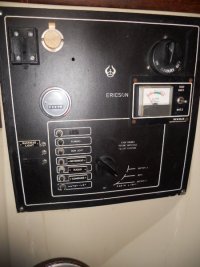Mark Taylor
Junior Member
New to me - 1983 25 Plus. Can anyone please advise the following on the 12V panel - See Pic attached:
~~ Upper Right Corner on panel - an "on/off" selector switch labeled "Sudbury" - What does it control?
~~ Left lower side. 3 toggle switches - top switch labeled "Masthead Light". What are the other two for & which direction for toggle is "on/off" ? This isnt that critical. Havent had the Nav lights on yet.
Just what I need. Another project !! Thanks for any help / knowledge you can share.
Mark Taylor @ Smith Mountain Lake, VA
~~ Upper Right Corner on panel - an "on/off" selector switch labeled "Sudbury" - What does it control?
~~ Left lower side. 3 toggle switches - top switch labeled "Masthead Light". What are the other two for & which direction for toggle is "on/off" ? This isnt that critical. Havent had the Nav lights on yet.
Just what I need. Another project !! Thanks for any help / knowledge you can share.
Mark Taylor @ Smith Mountain Lake, VA


 over to the top most part of the engine compartment to exhaust the heat via the blower to the cowl vent on the opposite side of the boat. When motoring, the air coming out the exhaust cowl vent is nice and warm.
over to the top most part of the engine compartment to exhaust the heat via the blower to the cowl vent on the opposite side of the boat. When motoring, the air coming out the exhaust cowl vent is nice and warm.